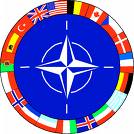NATO Tweets Too

See the Twitter website’s NATO News at http://twitter.com/nato_news]
-It gives NATO a platform to be a bit informal and not only use it as a one-to-many information transmitter, but also to receive feedback. Basically it looks like it’s given NATO a vehicle through which to disseminate it’s own take on events, and even enter into a gentle bit of public debate. For example – a June 20 re-Tweet links to a story questioning “Why we might lose in Afghanistan,” which is a question you might think NATO wouldn’t ask in so public a forum.
-And the most remarkable thing, apart from openness of the organization, is that a global leviathan like it could move fast enough to adopt such hot-topic technology in the first place.
Twitter gained a lot of credibility thanks to its use by Iranian protestors recently, and we already knew that it was useful for spreading breaking news. But did you know that NATO, the global military machine, Twitters too?
Check out NATO’s main feed at Twitter here. It’s a real mixture of news: Job opportunities, internal organizational matters, news feeds from Afghanistan and Iraq, links to NATO publications, and so on – basically it’s like a traditional PR feed mixed with interesting tidbits. Of course the Tweets are careful to remain apolitical, in keeping with NATO policy, and they’re never going to reveal any sensitive info. Unless someone makes a slip-up.
Different NATO bodies have their own Twitter feeds too – even the Supreme Headquarters Allied Powers, Europe division. This is more sporadically updated, but for a public affairs feed it’s remarkably personal in tone. There’s also the Afghanistan Matters feed, which is a forum for some debate on NATO activity in Afghanistan as well as a portal to a video contest for Afghanistan military veterans.
It turns out that NATO, like many large companies, has recognized how powerful a transmission medium Twitter is for public relations -essentially it’s another broadcast channel that the North Atlantic Treaty Organization can use to get its message out. And before you start wondering what kind of message a multinational military organization needs to transmit, have a think about this: The traditional media generally reports NATO’s police and military actions after they happen, interpreting the events into a typical news story. This gives NATO the “tanks and troops” public image we’re familiar with.
But Twitter is a bit different. It’s populated by a different demographic than the average net user. It gives NATO a platform to be a bit informal and not only use it as a one-to-many information transmitter, but also to receive feedback. Basically it looks like it’s given NATO a vehicle through which to disseminate it’s own take on events, and even enter into a gentle bit of public debate. For example -a June 20 re-Tweet links to a story questioning “Why we might lose in Afghanistan,” which is a question you might think NATO wouldn’t ask in so public a forum.
In fact, NATO’s use of Twitter seems in direct contrast to the U.S. forces in Afghanistan Twitter feed (yes, there’s one of those too.) This is separate from NATO activities, and it’s sometimes used to deliver a very simple message -how many enemies have been killed. However you may think about the morals of this, the intention is to counteract exaggerated or completely falsified Taliban claims. It’s effectively aggressive, home-facing propaganda, which makes NATO’s own Twitter feeds seem pretty tame in comparison.
Yet given the nature of NATO, it’s a bit surprising that it would be Tweeting at all. And the most remarkable thing, apart from openness of the organization, is that a global leviathan like it could move fast enough to adopt such hot-topic technology in the first place. On the flip-side of the coin, with close to real-time news about casualties in Afghanistan arriving as Tweets, Twitter could be evolving from its frivolous micro-celebs and gossip image into something a little more serious pretty soon.

